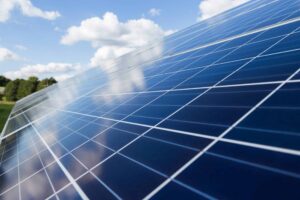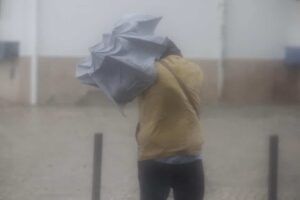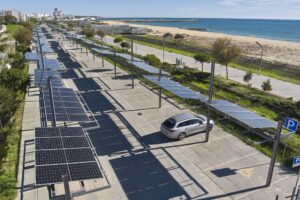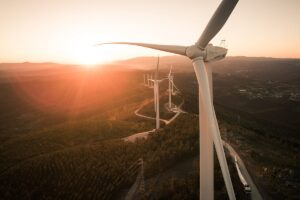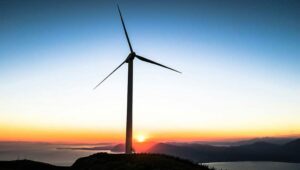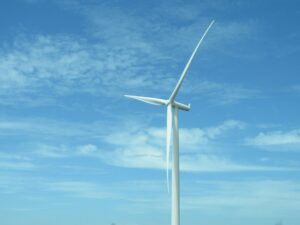By COLIN REID energy@algarveresident.com
Colin Reid is the technical director at the Enova Group and is a chartered engineer specialising in renewable and sustainable energy systems. He has over 20 years experience in the industry and lives with his wife and three children near Almancil.
The market place is inundated with a mass of thermal solar panels of all shapes and sizes. It is important therefore to seek expert advice in order to select the right type of panel for your system.
The choice of panel is affected by many criteria including:-
• Type of heating – sanitary hot water, space heating, pool heating;
• Geographical location – certain panels are more suitable for sunnier locations such as the Algarve;
• Site location – where space is limited, more efficient panels may be required.
The first rule of solar panels is that they must generally face south between south east and south west.
The second important element is the angle of inclination – again this depends on geographical location and the time of year.
Angle
In the Algarve, the optimum angle for all year round performance is about 35 degrees above the horizontal. If the panels are designed for summer or winter use and not year round, then this angle will change.
When sitting panels, it is also important to beware of shading from objects such as trees and other buildings. Remember that winter sun is lower than summer sun.
Winter sun is sometimes more important as it is at this time of year that we need the solar heat most, particularly when using solar energy for space heating.
Panels are normally located on the roof but can also be positioned in the garden. On new builds, it is now possible to integrate the solar panels into the roof structure by use of similar frames to those used for roof lights.
This makes the look of the roof far more attractive than the traditional solar panel installations.
The main types of thermal solar panel can be divided into three broad categories:-
• Black plastic panels
• Flat plate collectors
• Vacuum tubes
Black plastic panels are most suitable for low temperature water heating and are therefore ideal for pool heating, which is low temperature in comparison to sanitary hot water.
Again, the area of panels is most important to achieve the maximum benefit and expert advice should be sought before installing any system.
Flat plate collectors are the most common for sanitary hot water heating and these systems can generally be split into two categories:-
• Thermosyphon (gravity) type where the panel and hot water cylinder are combined into one package and mounted on the roof – not very pretty to look at but economical to install and very effective
• Pumped type where the panels are located on the roof and the hot water cylinder is located within the house (normally the basement). The water is then pumped in a closed circuit between the panels and a coil within the cylinder
Vacuum tubes
Vacuum tubes are also used in the Algarve but in many cases their use is not entirely necessary. They are most suitable for northern Europe where heat loss is more of a problem.
The vacuum in the tube acts as a very effective form of insulation, significantly reducing the heat loss and thus making the solar panel very efficient.
In the Algarve, where we have so much sunshine, flat plate collectors are normally quite adequate. However, where higher temperature heating is required such as for space heating, vacuum tubes are useful even in the Algarve.
Vacuum tubes also come in the two categories mentioned above. The main disadvantages of vacuum tubes are that they are more fragile than the flat plate collectors and tend to be more expensive.
There are two types of vacuum tube systems (both glass tubes):-
• The heat pipe type houses a sealed system containing a fluid, which absorbs heat and evaporates with solar energy and then condenses and releases heat on contact with the water
• The traditional type of heat exchanger, where water passes through a tube within the vacuum tube and the solar energy is transferred directly into the water
The advantage of the second type of vacuum tube is that it can be installed in a vertical or horizontal position, which is very useful in certain circumstances such as on flat roofs.
With all solar panel installations, it is essential to install a back-up system.
This is for two main reasons:-
1. To heat the water when there is insufficient sunshine
2. To assist the solar heating when there is a high demand of hot water
Back-up systems normally comprise a second coil within the hot water cylinder connected to a boiler circuit and/or an electric immersion heater.
What many people don’t realise is that with expert advice, it is possible to use solar energy for all types of heating including pool heating, sanitary hot water and space heating.
This can be done with centralised systems or independent systems. With centralised systems, a group of flat plate collectors or vacuum tubes connects to a central buffer vessel or thermal store together with a back-up system (such as a boiler or immersion heater).
The various heating circuits such as sanitary hot water and pool heating are then connected to the same system.
Alternatively, separate solar systems can be installed such as black plastic panels for the pool and a flat plate collector system for the hot water.
The important criteria to remember is that thermal solar works best with low temperature heating. It is therefore ideally suited to under floor heating, which operates at lower temperatures than traditional heating systems such as radiators.
Colin Reid can be contacted by phone on (00351) 282 960 969 or by email at energy@algarveresident.com. To visit the Enova Group website, click on the link to the right of this page.

